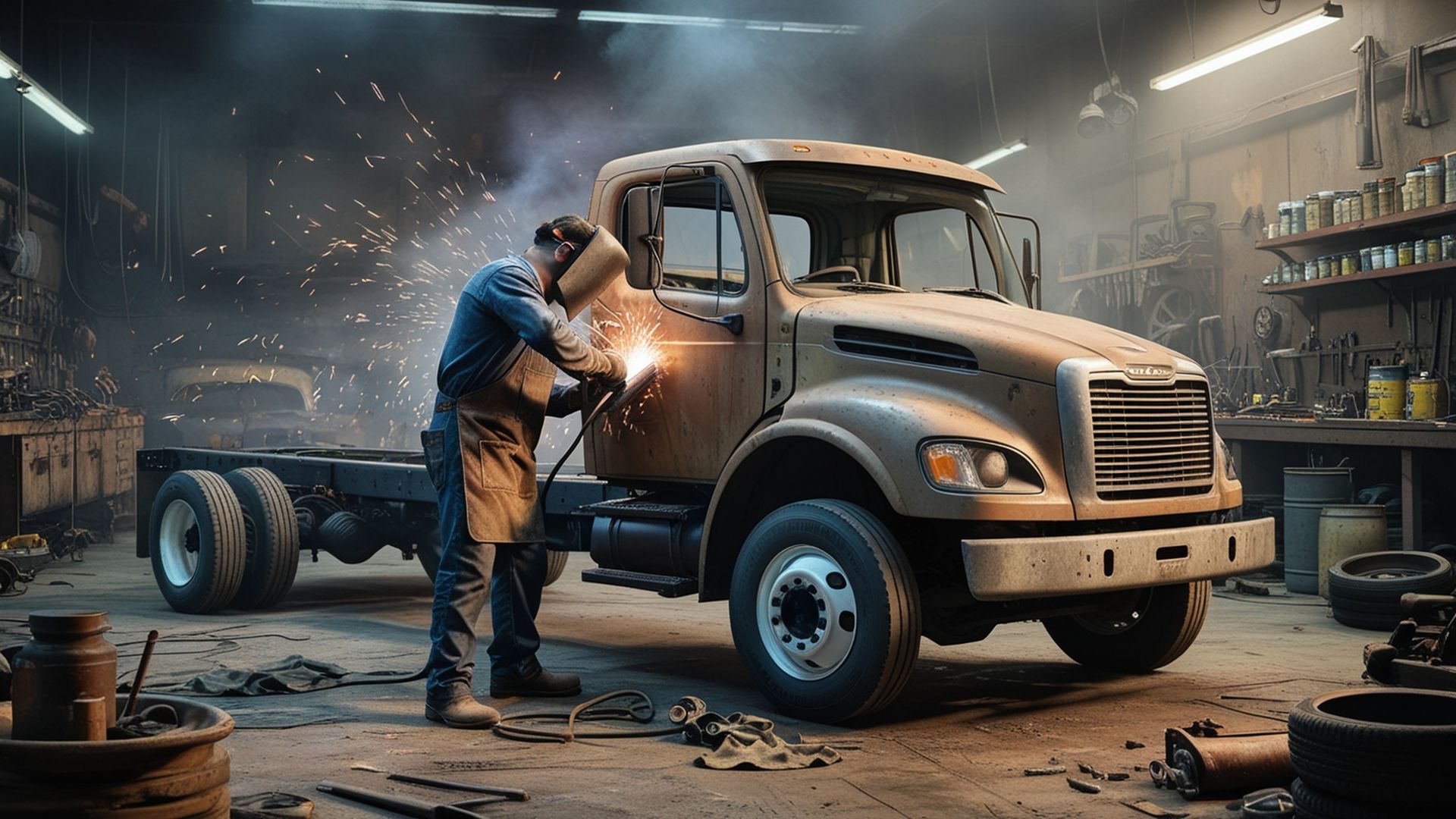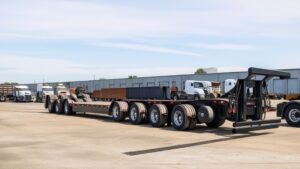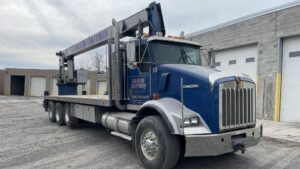The cab chassis is a versatile vehicle framework that serves as the foundation for a wide range of commercial and utility vehicles. In this comprehensive article, we will delve into the specifics of cab chassis, exploring their structure, specifications, and various applications. Understanding these aspects will provide insight into why cab chassis are indispensable in numerous industries, from logistics to emergency services.
What is a Cab Chassis?
A cab chassis, often referred to simply as “cab and chassis,” is a type of vehicle that consists of a cab and a bare chassis. This design allows for a variety of customizations, making it a popular choice for businesses that require specialized vehicles. Unlike standard trucks that come with a fixed cargo bed, cab chassis vehicles are sold as a blank slate, ready to be equipped with different bodies depending on the intended use.
Structural Components
- Cab: The cab is the driver’s compartment, which can range from a basic single cab to a more complex crew cab with additional seating. The design and comfort of the cab can vary greatly, depending on the manufacturer and the intended application.
- Chassis: The chassis is the vehicle’s frame, providing the structural foundation. It includes the vehicle’s suspension, axles, wheels, and sometimes the drivetrain. The chassis must be robust and durable, capable of supporting various types of bodies and heavy loads.
Key Specifications
When evaluating a cab chassis, several key specifications are considered to ensure the vehicle meets the necessary requirements for its intended use. These specifications include:
- Gross Vehicle Weight Rating (GVWR): GVWR is the maximum weight a vehicle can safely carry, including the vehicle itself, passengers, cargo, and any additional body installed. It is crucial to choose a cab chassis with a GVWR suitable for the expected load.
- Wheelbase: The wheelbase is the distance between the front and rear axles. A longer wheelbase typically provides better stability and a smoother ride, while a shorter wheelbase offers better maneuverability. The wheelbase is a critical factor in determining the types of bodies that can be installed.
- Engine Specifications: The engine’s power and performance are vital for the vehicle’s operation. Key engine specifications include horsepower, torque, fuel type (diesel, gasoline, or alternative fuels), and fuel efficiency. The choice of engine affects the vehicle’s performance, fuel economy, and suitability for specific tasks.
- Transmission: Cab chassis vehicles can be equipped with manual or automatic transmissions. The choice between the two depends on driver preference, the nature of the vehicle’s operation, and efficiency considerations.
- Suspension: The suspension system affects ride quality and load-bearing capacity. Different types of suspensions, such as leaf springs or air suspensions, offer varying levels of comfort and performance under load.
- Brakes: The braking system must be robust and reliable, especially for heavy-duty applications. Common options include hydraulic brakes and air brakes, each with specific advantages depending on the vehicle’s use.
- Axle Configuration: Cab chassis vehicles can have different axle configurations, such as 4×2, 4×4, 6×4, or 6×6. The choice of configuration depends on the terrain and load requirements. Four-wheel-drive (4×4) and six-wheel-drive (6×6) options provide better traction and off-road capability.
- Dimensions: The overall dimensions of the cab chassis, including length, width, and height, are essential for compatibility with different bodies and for ensuring the vehicle can operate within space constraints.
Applications
The flexibility of cab chassis vehicles makes them suitable for a wide range of applications. Here are some of the most common uses:
- Delivery Trucks: Cab chassis can be fitted with box bodies, making them ideal for delivery and logistics companies. These vehicles are often used for transporting goods in urban and suburban areas.
- Refrigerated Trucks: For transporting perishable goods, cab chassis can be equipped with refrigerated bodies, maintaining the necessary temperature throughout the journey.
- Dump Trucks: By adding a dump body, a cab chassis can be transformed into a dump truck, used in construction and mining industries for transporting loose materials like sand, gravel, and demolition waste.
- Utility Vehicles: Cab chassis can be converted into utility vehicles for use by municipalities, utility companies, and other service providers. These vehicles might include features like tool storage, lifting equipment, and work platforms.
- Emergency Vehicles: Fire trucks, ambulances, and other emergency response vehicles often start as cab chassis due to the need for specialized bodies and equipment.
- Tow Trucks: With the addition of towing apparatus, cab chassis can become tow trucks, capable of recovering and transporting disabled vehicles.
- Motorhomes: For recreational purposes, cab chassis can be converted into motorhomes, providing a durable and customizable base for travel and living accommodations.
- Flatbeds: Flatbed bodies can be added to cab chassis for transporting oversized or irregularly shaped loads that cannot fit into enclosed spaces.
Advantages of Cab Chassis
- Customization: The primary advantage of a cab chassis is the ability to customize the vehicle to meet specific needs. This flexibility is crucial for businesses that require specialized equipment or configurations.
- Durability: Cab chassis are built to be robust and durable, capable of handling heavy loads and harsh conditions. This makes them ideal for commercial and industrial applications.
- Versatility: The versatility of cab chassis vehicles means they can be adapted for different tasks over their lifespan. For example, a delivery truck can be converted into a refrigerated truck or a flatbed as business needs change.
- Cost-Effectiveness: By purchasing a cab chassis and customizing it as needed, businesses can often save money compared to buying pre-built specialized vehicles. This approach allows for a tailored solution without paying for unnecessary features.
Considerations When Choosing a Cab Chassis
When selecting a cab chassis, businesses should consider the following factors:
- Intended Use: Clearly define the vehicle’s primary and secondary uses to choose appropriate specifications and configurations.
- Budget: Determine the budget not only for the initial purchase but also for the customization and long-term maintenance of the vehicle.
- Regulations: Ensure the chosen cab chassis and its modifications comply with local regulations and industry standards.
- Manufacturer and Model: Research different manufacturers and models to find a cab chassis that offers the best combination of reliability, performance, and support.
- After-Sales Support: Consider the availability of after-sales support, including maintenance services, parts availability, and warranty coverage.
Conclusion
Cab chassis vehicles offer unmatched flexibility and adaptability, making them an essential asset in various industries. Understanding the specifications and potential applications of cab chassis helps businesses make informed decisions, ensuring they choose the right vehicle to meet their specific needs. Whether for delivery, emergency response, or construction, the cab chassis provides a solid foundation that can be tailored to fit a wide array of requirements, demonstrating its indispensable role in modern transportation and logistics.




